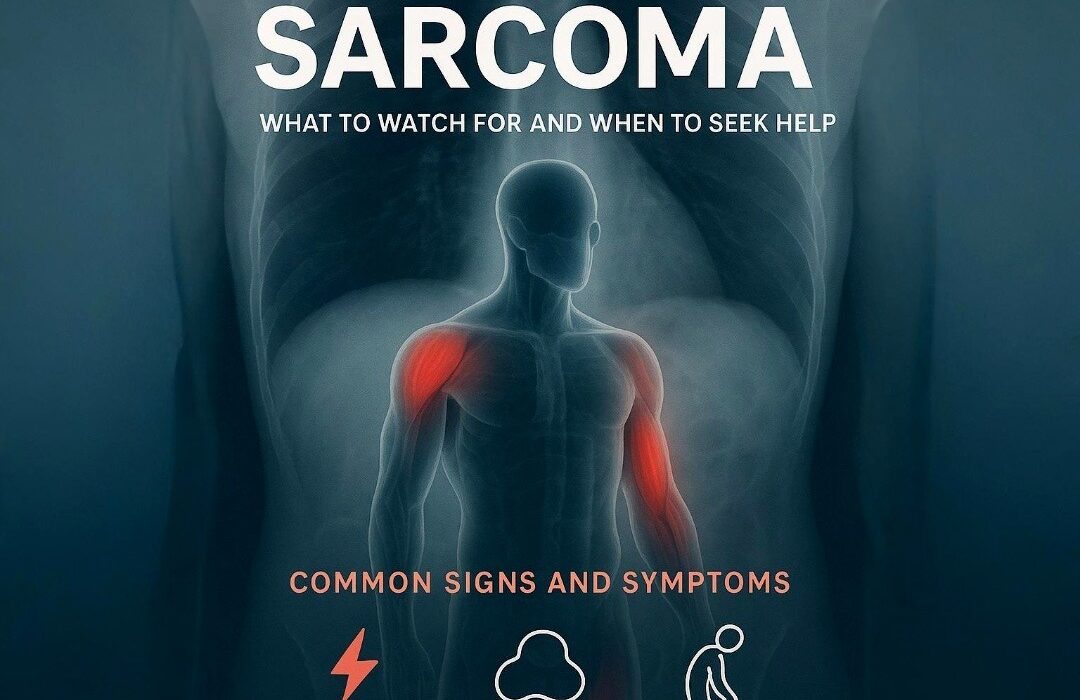When Sarah noticed a small, painless lump on her thigh, she dismissed it as a minor bruise from her weekend hiking adventures. Six months later, that seemingly innocent bump had grown noticeably larger, prompting a visit to her doctor that would change everything. Her story isn’t unique—early signs of sarcoma often masquerade as common ailments, leading many patients down a delayed diagnostic path that could significantly impact their treatment outcomes.
Sarcoma, a rare cancer affecting bones and soft tissues, presents unique challenges in early detection. While these cancers account for less than 1% of all adult cancers, recognizing their subtle warning signs can be life-saving. Understanding what to watch for—and more importantly, when to seek professional help—can make the difference between catching sarcoma in its treatable early stages versus facing a more complex medical journey.
What Exactly Is Sarcoma?
Sarcoma represents a diverse group of cancers that develop in the body’s connective tissues—the framework that holds us together. Unlike more common cancers that arise from epithelial tissues, sarcomas grow in bones, muscles, cartilage, fat, blood vessels, and other supportive structures throughout the body.
There are two primary categories: soft tissue sarcomas and bone sarcomas, with over 70 distinct subtypes between them. This diversity contributes to the diagnostic challenge, as each type may present differently and affect various parts of the body. Most commonly, sarcomas develop in the arms and legs, though they can appear virtually anywhere.
https://www.ncbi.nlm.nih.gov/books/NBK519533/
The Most Common Early Warning Signs:
The Telltale Lump or Swelling:
The most frequent early sign of sarcoma is a painless lump or swelling in soft tissue or bone. This characteristic often leads to delayed diagnosis because the absence of pain creates a false sense of security. Research shows that patients experiencing pain tend to seek medical attention sooner, while those with painless swelling often delay consultation.
In a comprehensive Indian study tracking 140 patients with soft tissue sarcoma, 70% presented with swelling, with 58.5% describing it as painless. These lumps typically:
- Grow gradually over weeks or months
- Feel firm and may be difficult to move
- Vary in size from small bumps to large masses
- May not cause discomfort initially
Persistent Bone Pain:
For bone sarcomas, persistent bone pain often serves as the primary warning signal. This pain differs from typical aches and can be particularly concerning when it:
- Occurs without obvious injury or cause
- Worsens at night
- Persists for weeks or months
- Feels like a deep ache or soreness
- May initially come and go before becoming constant
This type of pain is frequently misattributed to growing pains in teenagers or arthritis in older adults, contributing to diagnostic delays.
Limited Movement and Joint Stiffness:
As tumors grow, they can interfere with normal function, causing:
- Reduced range of motion in nearby joints
- Difficulty walking or limping
- Stiffness in affected limbs
- Pain during movement
These functional limitations often develop gradually, making them easy to overlook or attribute to other causes.
Systemic Symptoms:
While less specific, some patients experience broader health changes including:
- Unexplained weight loss
- Persistent fatigue
- Loss of appetite
- General weakness
The Hidden Challenge: Why Sarcomas Go Undiagnosed:
Research reveals that diagnostic delays are remarkably common in sarcoma cases. A recent study found that patients with bone sarcoma took an average of 3 months from symptom onset to diagnosis, while soft tissue sarcoma patients waited 5 months. Even more concerning, the median diagnostic interval reached 87.5 days, with some patients waiting over 15 years for proper diagnosis.
Several factors contribute to these delays:
Symptom Attribution: The most problematic aspect is that symptoms are commonly attributed to lifestyle factors. A painless lump might be dismissed as a sports injury, while bone pain could be attributed to overexertion or age-related changes.
Healthcare Provider Awareness: Even medical professionals can miss early signs. The rarity of sarcomas means many healthcare providers have limited experience with these cancers, potentially leading to misdiagnosis or delayed referral to specialists.
Patient Hesitation: Many patients hesitate to seek medical attention for seemingly minor symptoms, especially when they’re not causing significant discomfort.
Specific Types and Their Unique Presentations:
Soft Tissue Sarcomas:
These cancers may not cause symptoms in early stages. When they do present, common signs include:
- A noticeable lump under the skin
- Gradual growth of a soft, painless mass
- Breathing difficulties (if located in the chest)
- Abdominal pain (for abdominal sarcomas)
Bone Sarcomas:
Bone sarcomas typically present with more obvious symptoms:
- Persistent bone pain, especially at night
- Swelling around the affected bone
- Fractures with minimal or no trauma
- Limited mobility in nearby joints
Synovial Sarcoma:
This particular subtype deserves special mention as it’s highly misdiagnosed due to inconspicuous and diverse early symptoms. The complexity of its presentation makes early recognition particularly challenging, emphasizing the importance of professional evaluation for any persistent, unexplained symptoms.
When to Seek Medical Help: Clear Guidelines:
Healthcare professionals recommend seeking medical evaluation if you experience:
Immediate Consultation Needed:
- Any new lump or mass, regardless of pain level
- A mass larger than a golf ball (approximately 5 centimeters)
- Bone pain persisting for more than a few days without clear cause
- Unexplained limping or walking difficulties
Don’t Wait and See:
The key message from sarcoma specialists is clear: every day matters in sarcoma diagnosis and treatment. Cancers detected early typically offer wider treatment options and better outcomes. Even when a “watch and wait” approach might be appropriate, having a specialist actively monitor your condition provides invaluable peace of mind and ensures nothing is missed.
The Diagnostic Process: What to Expect:
When you consult a healthcare provider about concerning symptoms, they’ll typically begin with:
- Thorough medical history and physical examination
- Imaging studies such as X-rays, MRI, or CT scans
- Biopsy if imaging suggests a potential tumor
- Specialized testing to determine the exact type of sarcoma
Modern diagnostic approaches have become increasingly sophisticated, with specialists using advanced imaging and molecular testing to provide precise diagnoses and treatment planning.
The Importance of Specialist Care:
Given the complexity and rarity of sarcomas, consulting with a sarcoma specialist can make a significant difference in your care. These specialists:
- Have extensive experience with various sarcoma subtypes
- Stay current with latest treatment advances
- Offer access to clinical trials and cutting-edge therapies
- Provide comprehensive, individualized treatment plans
Many cancer centers now offer sarcoma-specific programs with multidisciplinary teams including surgeons, medical oncologists, radiation oncologists, and other specialists working together.
Taking Action: Your Next Steps:
If you’re experiencing any concerning symptoms, don’t let uncertainty hold you back from seeking professional evaluation. While many lumps and aches have benign explanations, the peace of mind that comes from proper medical assessment—or the early intervention that could save your life—makes that appointment worthwhile.
Schedule an appointment with your healthcare provider if you notice persistent lumps, unexplained bone pain, or functional limitations that don’t improve with time. Remember, you don’t need a referral to consult with many sarcoma specialists, and early detection truly can make all the difference in your treatment journey and outcomes.
Your health deserves attention, and recognizing these early signs of sarcoma could be the most important knowledge you never hope to use.






